If you click on a link and make a purchase we may receive a small commission. Read our editorial policy.
Neal Adams’ family looks back on his life and legacy
On the anniversary of Neal Adams’ passing, Popverse sat down with the members of his family: his wife Merilyn, his daughters Kris and Zeea, and his sons Joel, Jason, and Josh. In candid conversation, they talked to us about their most important memories of their husband and father; their thoughts about his life, work, and legacy to the industry he loved; and how they hope the world remembers the role he played in comics and culture.

One year ago today, the light of comics history grew a little dimmer. On April 28, 2022, Neal Adams – artist, writer, publisher, studio director, and organizer and advocate for comic professionals – passed away at the age of 80. To say that his influence on comics was revolutionary is only to observe what comics were compared to what they are today. That extends far beyond the superficial look of modern superhero books, a genre to which Adams brought an unanticipated and captivating sense of heightened realism and illustrative capability. It encompasses, as well, our very sense of comics as a field of capable and respected professionals, aware of their value, and recognized by their readers and fans.
Artistically, Adams honed his craft in the worlds of syndicated comic strips (where he served as the artist on Ben Casey and other newspaper staples before entering the comic book field in earnest) and advertising (a field he periodically entered in between comic stints), both of which trained him in his distinctive and jarringly revolutionary style: sui generis combination of painterly realism and Kirby-esque heightened emotion that almost singly upended the standard mode of superhero storytelling. His tenures on X-Men, Green Lantern/Green Arrow, Deadman, and especially his shadowed and moody Batman remain the stuff of legend long after their first appearance. Nor was he content to rest on his laurels, whatever controversy or consternation it may have inspired among nostalgic fans: in 2010, he returned to DC Comics to write and draw Batman: Odyssey, three decades after his last sustained work on the character.
This alone would be enough to cement Adams’ reputation, but in a past year that has seen a renewed movement toward collective organization and ownership rights among comic creators, his role as a formative influence on creator independence has become just as important. As president of the Academy of Comic Book Arts in the '70s, he turned a would-be boys club into an attempt at collective organization and creator advocacy organization (much to the frustration of the Academy’s founder Stan Lee). Enlisted by Superman creators Jerry Siegel and Joe Shuster to speak up for their rights ahead of the 1978 Superman film, Adams was a key mover in securing the two men an income and creator credit for their contribution to comic book history. And as the founder and director of Continuity Studios, he helped to pioneer a new model of artist agency and independence in a world of work-for-hire comics.
No surprise, then, that the past year has seen no shortage of retrospectives, elegies, and revisitations of Neal Adams’ career. What has been missing from all of this, however, are the words and perspectives of the people who knew him best: his wife and children, who knew, loved, and worked with Adams throughout the length of his life and career. Now, a year after his passing, they decided to speak.

On the anniversary of Neal Adams’ passing, Popverse sat down with the members of his family: his wife Marilyn, his daughters Kris and Zeea, and his sons Joel, Jason, and Josh. In candid conversation, they talked to us about their most important memories of their husband and father; their thoughts about his life, work, and legacy to the industry he loved; and how they hope the world remembers the role he played in comics and culture.
“Holy s**t, this is the most intimidating first lesson in how to draw comic books ever.”

Kris Stone Adams, daughter: One of my earliest memories of my dad was watching him work on the comic strip Ben Casey, and staying up all night shooting Polaroids with my mom and dad in them, posing. It was a Polaroid camera where you pulled the Polaroid out, and then you pulled a layer of white off of it, so you had these pink sticky things that you had to coat – it smelled like vinegar. And my first job was to vinegar-stick all of the photos. My memories are of staying up late, and watching my dad pose as Ben Casey, and my mother pose as the nurses, and if there was a kid, I’d get thrown in there occasionally. So my first memories are kind of work memories, in a weird way.
Joel Adams, son: I remember spending time with him on weekend visits, because Cory [Pfeifer, Neal’s first wife] and Neal had separated when I was very young. So he’d always set up home so that he had a drawing board in the living room, so we could watch television and sit with him while he worked. I’m sure we spilled ink or got pens and pencils all over stuff while he worked on it.
Jason Adams, son: It didn’t occur to me for a very long time that dad was important as an artist. I sort of got picked on in school because I had Superman action figures and stuff I brought in, and I remember dad drawing Superman vs. Muhammed Ali in the first studio that he had. I remember seeing the stuff, and thinking it was awesome, but it wasn’t until I was older that I could connect it with the brilliance of his work, or what a legend he was. He was just my dad, you know? He taught me to throw a Frisbee in Central Park. He’s sitting at a drawing table. That’s what dad’s do.

Zeea Adams, daughter: When you’re a small child, you don’t really appreciate your parents for what they are and what they do. It’s like, yeah, of course dad draws. Doesn’t every dad draw? But as I grew older, I’ve been able to appreciate dad for the absolutely brilliant artist that he was, and you can see that in a lot of my coloring work.
Joel: I always knew that he did comic books, but I didn’t really notice who he was until I started noticing other people noticing dad. Neal would take us to comic conventions, and there would be these lines of people waiting to see him. And at one point in school, friends started walking up to say, 'Oh my God, your dad is Neal Adams! Your dad drew Batman!' And it’s like, 'Well, yeah. He does that every day. It’s what he does.'
Zeea: It’s not until you see other people going 'Oh my God, there’s Neal Adams!' that you’re like, “Wait. Dad’s cool?”

Kris: Because I’m the oldest, I lived with him mostly while he was working on Ben Casey. We were always behind deadline in the house. When you do a newspaper strip, it’s a grind, and you just get no breaks. The script would come in, and right away dad would take a pencil and start reading it and laying out panels. We would get the cameras set up, the lights would go up, we’d start shooting Polaroids, and then we’d go to bed. And then the next day he was drawing. And we were always running to Penn Station to get a special delivery to the newspaper strip in Ohio.
Later on, when he was working in comic books, I would actually go into DC Comics with my dad, so I actually got to experience some of the fights that went on: arguments where he was trying to make things better in the industry while he was drawing. Because he was always drawing. All of us will say we grew up underneath dad’s drawing board, because if you wanted to have a conversation with dad, that’s where you would have to talk to him from.
Marilyn Adams, wife: My first husband was a fine artist, and he was a huge fan of Neal’s. My ex-husband actually had files with old Ben Casey strips and things like that. He just thought Neal was the best thing ever. So I had actually heard about Neal for years before I met him.
So, flash forward a few years, and I was living in New York and working in advertising. And I became a client of Neal’s. I was like the client from hell, because I was always making changes that were impossible. But Neal was a softy, and he always made the changes. And at some point it became clear that my marriage to my first husband wasn’t going to work, so Neal said to me, 'Well, it sounds like you and I have a lot in common.' And then he asked me out, and that was sort of the beginning. He would say that I moved in and never moved out.
Josh Adams, son: It honestly wasn’t until I had decided that I wanted to become a comic artist myself, sometime when I was in high school, that I really started focusing on dad’s work. That was around the same time that he decided to come back to DC and do Batman: Odyssey. So I was sitting there with my first comic boards on my desk, trying to figure out how to draw comic pages, and he’s just out of nowhere drawing these incredible Batman pages over my shoulder. And I was like, “Holy s**t, this is the most intimidating first lesson in how to draw comic books ever.”
Marilyn: I was exposed to his friends, and the people that he worked with, and that he helped – because he was known to be a father to lots of comic book artists that he helped get into the industry. So Neal has endless sons. And that’s how I began to really appreciate his comic art. He made me real all his old comics, and he always accused me of falling asleep while I was reading them. And it used to really piss him off!
“He was very competitive, and he was always learning.”

Kris: I grew up in an era where comic books were considered bad: if you got caught in school with a comic book, you were in trouble. I remember in elementary school, we were all supposed to bring our parents to school to talk about what they did for a living. And my teacher asked me what my dad did for a living, and I said he drew comic books, and she just whooped and moved on to the next kid. I wasn’t allowed to bring my parents to school because it was like I was the daughter of Satan, right? And by the time my younger brother Josh took dad to school with him, it was like he had the Gold Card now.
I think dad played a huge part in changing that. Green Lantern/Green Arrow got a lot of newspaper coverage, because they were poking at things that comic books never really got away with; things that were relevant. They made comics become more real, and that helped get us to where we are today.

Josh: Our middle school had a week-long thing where people would bring in guests to speak, and dad would always come in to talk about writing and drawing comics. It was cool, because he would do a quick sketch of Batman and the Joker on the chalkboard, and then they wouldn’t want to erase it for, like, three periods after that. So teachers would have to do their lessons around the sketch of Batman.
Zeea: For other comic artists, he completely changed the way they drew anatomy. Prior to dad, it was always the Steve Reeves kind of build on superheroes, where the muscles were not defined. Whereas when dad came along, the anatomy was apparent: you could see the cut of every muscle, and every superhero had that sort of swimmer’s body or gymnast’s body. You could see every muscle of the anatomy.
And when it came to perspective, I will never be able to explain how dad was able to do it. He could mentally put a camera anywhere in a room where he was shooting his characters, and the perspective was always spot-on. He drew like a director directing a film, with camera positions that I had never experienced in a comic before dad’s time. I still have yet to see an artist that can do a lot of the things that dad was able to do.
Joel: He broke the rules. He broke he frames. He changed the panel layouts. He did realistic anatomy, which came from his days at Ben Casey working from photographs. He brought a realism that comic books didn’t really have before that.
Josh: I feel like if you look at the timeline of comic art, there’s a distinct line between Before Neal Adams and After Neal Adams, and he’s this sort of singular benchmark that caused that change.
Jason: I think there is a huge difference between a cartoonist and a comic illustrator. Dad was a huge fan of Spanish artists like Esteban Moroto – they don’t draw the way a person learns to draw from a book like How to Draw Comics the Marvel Way, where you’re drawing a circle, and a t-shape through the eyes, and all that stuff. There are people out there who are learning to draw like illustrators by using reference and taking photographs – dad would always say "tracing.” No shame in tracing!
Marilyn: Every young artist who asked Neal, 'How do I become a comic book artist?' Neal’s first answer was, “Trace photographs.” And that’s how Neal really learned reality, and why he used so much reference back then. But it got to the point where he didn’t need reference, because he was so trained by that tracing.
And there were his inking styles on top of that. Dad had people that he liked to ink his work, but I don’t believe anyone could ink dad’s work better than himself. The techniques he learned through everything he did before he came into comics came into play. He was illustrating Ben Casey – it’s not cartooning, it’s illustrating.

Kris: Before Neal, there was a formula to comic book drawing. And Neal came in and he actually drew different ears for different characters. Most artists before dad had one ear that they would draw, but Neal made sure every superhero he drew had a different ear from each other. And there was a reason, because humans don’t all have the same ears. And he kept it consistent, because there are times when I can almost tell whether it’s Hal Jordan, or Oliver Queen, or Superman just by looking at the ears. Here was a man who comes in, and just has knowledge of everybody.
Zeea: And before dad, in crowd scenes, everybody looked the same; just different haircuts. Any time dad drew a crowd, there were no two people that looked the same. Everybody looked like a real person that actually exists. He would pull it out of his head, but it looked like it had to be a real person.
Kris: Most artists grow to a certain point, and then they stop, and just keep doing what they know how to do. Neal always grew and changed with what was going on in the industry. Even in his inking, if you look at what he did on Batman vs. Ra’s al Ghul, or even on Superman vs. Muhammed Ali, and then you look at the inking on Batman: Odyssey, Neal’s inking is changing through all three of those. He’s incorporating a bit of Jim Lee; he’s getting better at doing faces, because he’d been doing more commercial work. So he was always learning and getting better.
You know, as a kid, when we did Ben Casey, I would have to go to the newsstand and get all the newspapers I could get us, and chocolate egg creams or chocolate malteds, and when I came home my first job was to get the newspapers open, and cut out all the syndicated strips that were drawn realistically, including Ben Casey. And I would have to lay them out on a table, and he came in, and it was like he either won that week, or else it was not going to be a nice night in the house. He would just be really upset that, you know, Dr. Kildare looked better than his Ben Casey that week. And it would just make him work harder the following week. He was very competitive, and he was always learning.
“Dad was the dad to comics creators.”

Kris: Neal came into comics with a lot of knowledge about the industry, and about what creators should get, because he was on a syndicated strip. As I kid, I never understood how dad could be so smart – where did he get all this knowledge of stuff? And then one day, I found his old Ben Casey contract in a file somewhere in Continuity Studios. And I read it, and realized that Ben Casey contract was like the Rosetta Stone of why Neal Adams fought for the stuff he fought for: because that syndication contract was a perfect contract. It said, these people are on Ben Casey, these people own the newspaper strip, Neal Adams owns the artwork. And it was just perfectly laid out that the artwork was going to get returned to Neal Adams, because it belongs to Neal Adams.
So when Neal comes into the comic book industry, he’s coming into an industry that’s going out of business. They weren’t hiring. Like Neal always said, there was nobody within 10 years of him: either he was 10 years older than someone, or 10 years younger. Neal comes into the industry by himself, so what did he fight for? First, he fought to get better production. He was in the production room [at DC] fighting with Jack Adler all the time – you know, “Why does Marvel have more colors than DC?” And he got more colors into DC. Everything Neal did made the industry better. Sharing with creatives only makes creators do a better job. When you don’t share anything with a creative team, then you’re working for your paycheck. Every human being, if I’m going to get a bonus or something that I don’t share with them, why are they busting their backs? Why should they do a better comic?

Zeea: People always name one artist or another as the father of comics, but I would have to say dad was the dad to comics creators. It was like, any time anybody had trouble, any time they were out of work and needed some job to work on dad was always there for them, and would always look out for them.
Josh: One thing I’d say about dad and the things he’d try to do to help the industry, especially in his later years, he’d do them rather quietly. Like the way he went about charging for signatures at conventions. He took so much crap from other professionals for years about it. And then, just this past year at Comic-Con, I actually saw the convention emailing out lists of which creators were charging for signatures, so people could be prepared. And dad took crap about it for years, but he would just say, “If you’re paying celebrities $50-$100 for a signature, you can afford to pay a few bucks to a comic artist who’s coming to a convention.” And it wasn’t a selfish thing; it was a resolve to stick with it, to make the business better for all the creators out there who now get to do it.
Kris: Jerry Siegel [comic writer and co-creator of Superman] wrote a handwritten letter to Neal. This was in ’75 or ’76 when the first news of the Superman movie came out, and he was finally fed up and hoping to get credit and a little more money for what he had made. So he wrote a letter asking for Neal’s help, because Neal was the top dog at DC at the time, and Jerry was hoping the top dog would be able to help him talk to DC Comics.
And Jerry wanted Neal to be aware of his case, because Neal had had the Academy [of Comic Book Arts], which he had used to start organizing creators, and advocating for them. And he knew that Neal was a good spokesperson, as well as someone who loved the industry. And, you know, he was always just ahead of the game somehow – usually because everybody talked to him, and would come into Continuity and tell him their stories, or tell him, 'I’m having hard times.' I mean, we had lots of artists come into Continuity who weren’t getting any more work at Marvel or DC, and Neal would always pick up the phone and help them out, or give them work at Continuity. We inherited Jack Sparling and Win Mortimer back in a time period when they couldn’t get work, and Neal put them to work doing animation stuff or animatic work. So he was a big-hearted guy who loved the industry, and wanted it to succeed.
So it was an awful lot of time and letters fighting for Jerry and [Superman artist and co-creator] Joe Shuster, all while he was running Continuity, which was very new. And we have a photo of Jerry and Joe, with Neal, and Joel, and Jason, and Zeea.
Marilyn: Neal went on The Late Late Show with Tom Snyder, along with Jerry and Joe. And Tom said to Neal, “You have to go on TV with them, because one guy [Shuster] is just the sweetest guy on earth, and he’s not going to say anything bad about anybody. And the other guy [Siegel] is just spitting acid, he’s so angry.” So he asked if Neal would go on and kind of be a middleman – a nice but strong guy, because Neal was very good looking and well-spoken, so he could appeal to the audience without emotions getting in the way.
Kris: Because of Neal, the older generation of artists who get put out to pasture are now making money. They’re doing commissions, they’re signing signatures, and those things were not available to the Gene Colons or Dick Ayerses. Win Mortimer learned from Continuity to do commissions: I know there were a couple of thick envelopes that came in, and Neal just passed a nice wad of cash over to Win one day. So Win picked up on that very quickly. Maybe Neal wasn’t noisy about it, but he trained an entire industry to make money now as creators. And it has helped the elder statesmen of comics survive and take care of their families.
“Buddy, he’s selling more books than me, he must be better than me.”

Jason: I remember for a long time, we had pretty much every comic from every publisher sent over from a comic shop. And dad would go through them, and say, “This guy’s better than me. Buddy, he’s selling more books than me, he must be better than me.” And sometimes he would say that just to piss me off, because he wasn’t a worse artist in any way, but he was taking the trends very seriously. And if he kept drawing the same ‘70s stuff, it would to some people seem older, so dad adapted his art.
So when he wanted to recolor something to look more modern, and even to change artwork in some cases, I think he was right. As much as we can be purists, he wanted his stuff to live on for as long as it could, and to update it but still keep the feel of the original. That’s what the Batman by Neal Adams books were all about.
Joel: When Neal did Batman: Odyssey, it had its complaints. People complained about the writing and stuff, but artistically, that was Neal coming back into comics after 20 years and throwing the gauntlet down.
Kris: In most comic books, you have, like, five or six pages of what I refer to as Easy Work. And then you get a splash page where there’s some action, and then you go back to a couple of pages of Easy Work again. In Odyssey, there is not one page of Easy Work – maybe the first page in every chapter with Bruce Wayne talking in the Batcave, but after that, every page has stuff going on. There isn’t one page that’s not just jam-packed with action, and dinosaurs, and bats, and, you know, Munchkin guys and craziness.
Joel: There’s a book that’s not out there for anybody – maybe at some point we’ll get it put together. But he did it for his science theories [about an expanding Earth], and the entire book is a conversation between two scientists in a bar. And I can’t tell you how many different ways Neal would show you every possible camera angle to make it interesting. I don’t know how he did it. I always keep a copy around nowadays, because I have to draw a lot of boring talking heads in my own work.
“He slapped the table and said, ‘I’m not done yet.’”

Zeea: Dad’s legacy, at least in my view, is what he’s passed on to everybody else: all the other artists, and all the other creators, and the industry itself. Dad has had an influence on people that you wouldn’t even imagine. Directors, doctors, people from all walks of life. He connected with them, and they connected with him.
Jason: Dad himself would roll his eyes at the question. He would talk about how he believes in working hard – he often referred to himself as a whore. He’ll do what there is, draw whatever he’s got to draw. You’ve just got to take care of your family. His own legacy, he just kind of pushed off the question as, “I’m doing what I’ve got to do.” He loved drawing, so being a workaholic – it almost doesn’t deserve the 'holic' part. He was enjoying himself the whole time.

Joel: I saw Neal at Comic-Con when they gave him the lifetime achievement award. And the first thing Neal did when he got to the podium was he slapped the table and said, “I’m not done yet.” And then afterward, he held out his artms and said, “I feel like you’re all my children.” And that’s kind of how he treated everybody.
Zeea: I did a convention on my own after dad had passed. It was a smaller show, and I just wanted to feel out how it would be doing shows now that dad wasn’t around. And the number of people who came by to tell me their story of dad, it was just phenomenal. The number of people dad had that connection with – wherever they are, whatever convention they’re at, they’re going to come and tell me about it.
Josh: Dad always exuded energy no matter what company he was keeping. I remember we were at a convention in the UK, and it was dad’s first time back after a long time. His first time over there was apparently the stuff of legend, so his return was highly anticipated. And this one guy had come up to him: apparently, when he was a kid, he had taken a photo sitting in dad’s lap at a signing at Forbidden Planet in London. And he wanted to recreate the photo now that he was in his forties. And dad was completely for it! So there’s a photo now of dad posing with this 40-year-old man sitting in his lap, gleefully smiling at the camera. That just feels like dad’s energy.
Follow Popverse for upcoming event coverage and news
Find out how we conduct our review by reading our review policy
Let Popverse be your tour guide through the wilderness of pop culture
Sign in and let us help you find your new favorite thing.


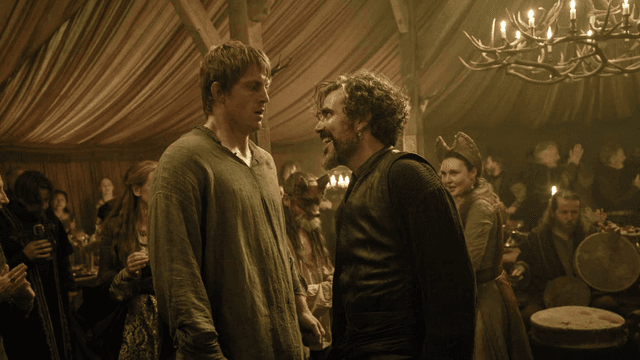


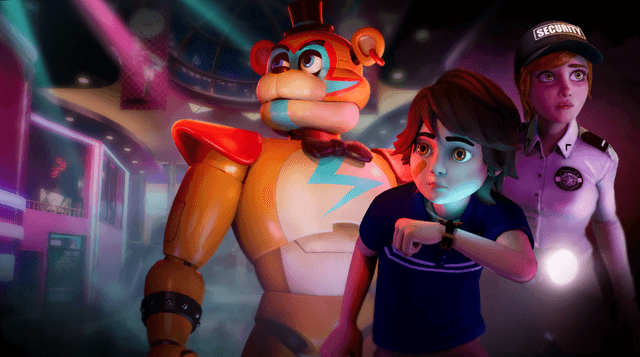
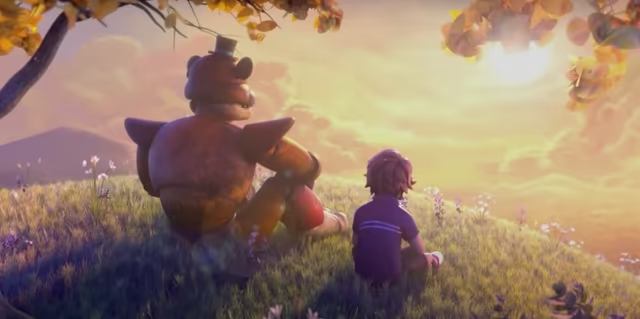
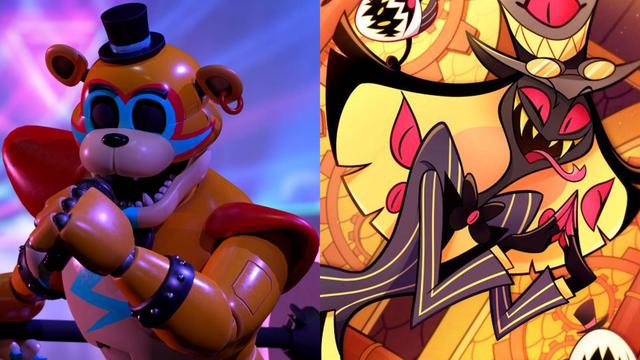

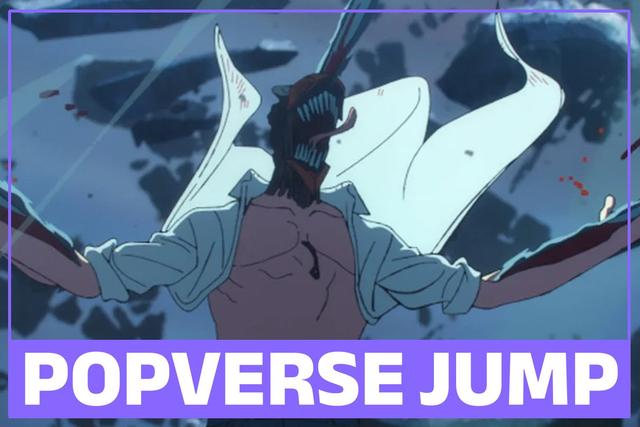






Comments
Want to join the discussion? Please activate your account first.
Visit Reedpop ID if you need to resend the confirmation email.